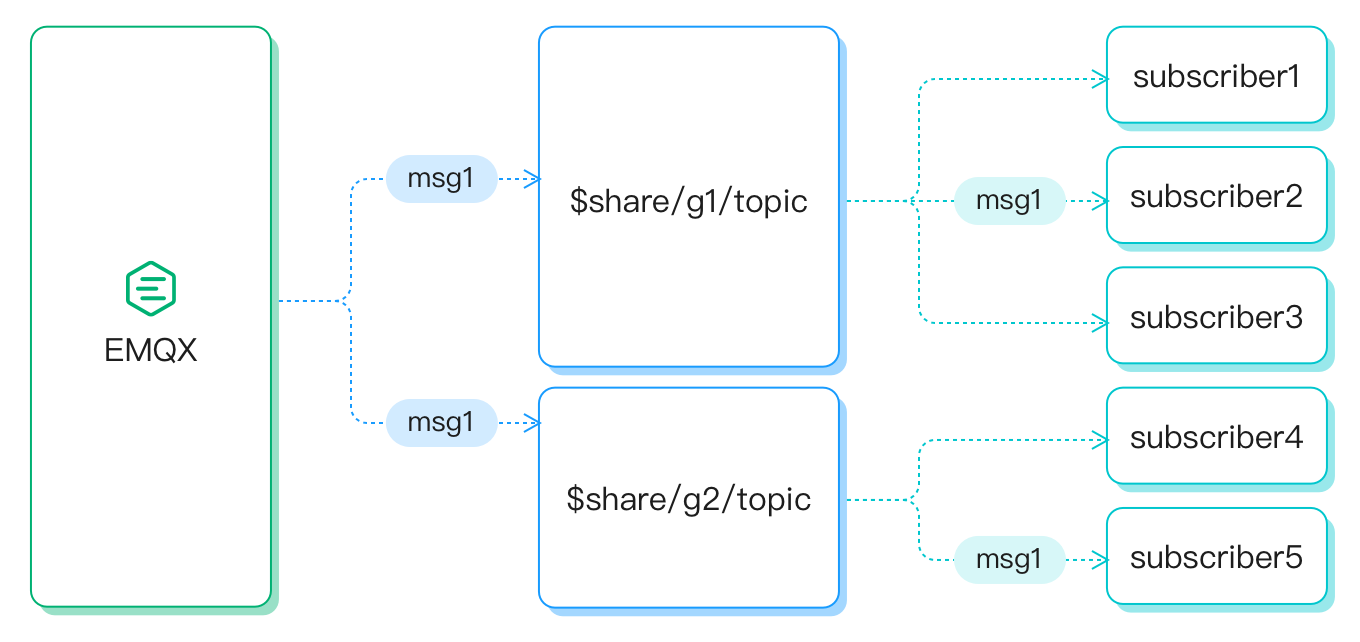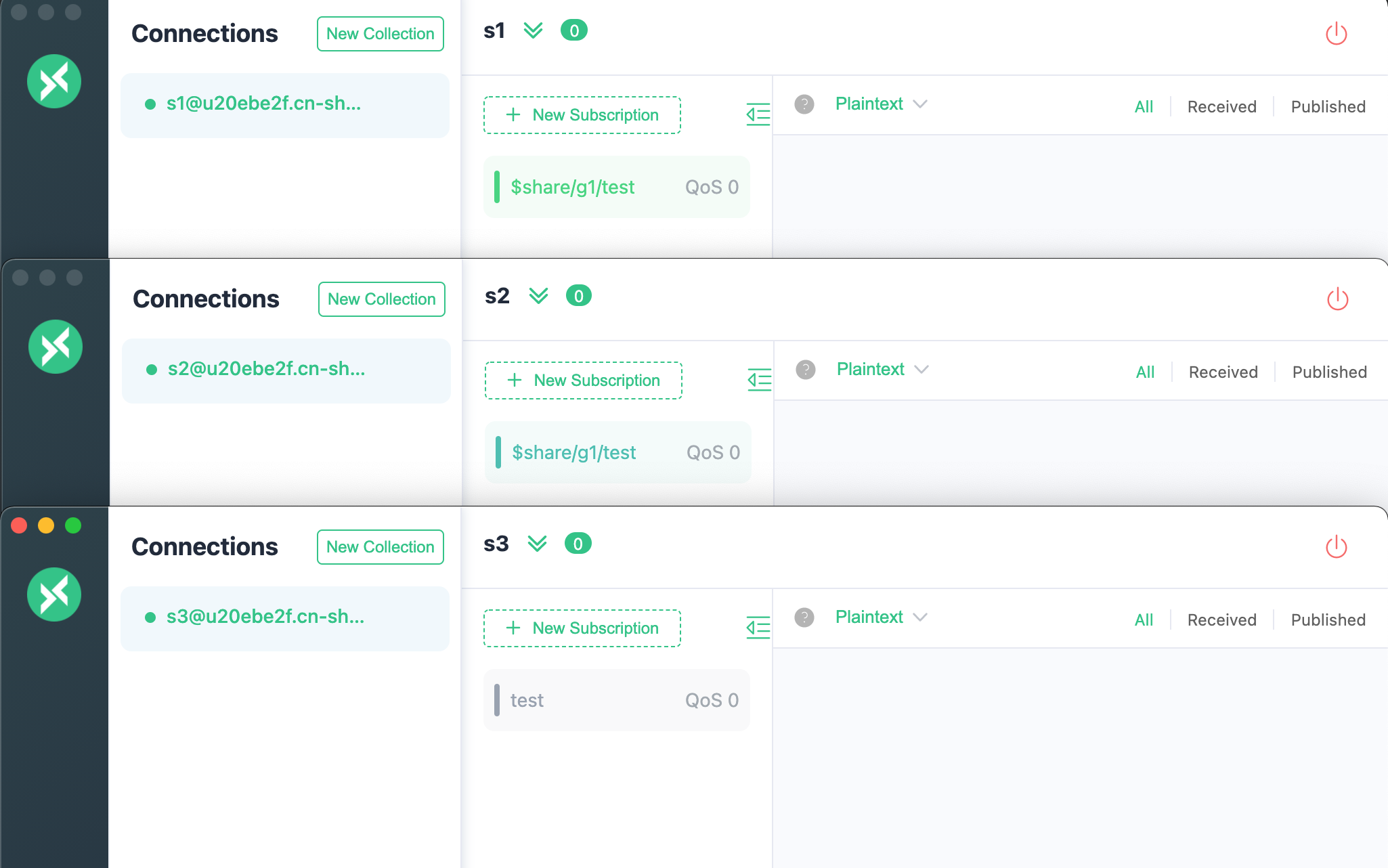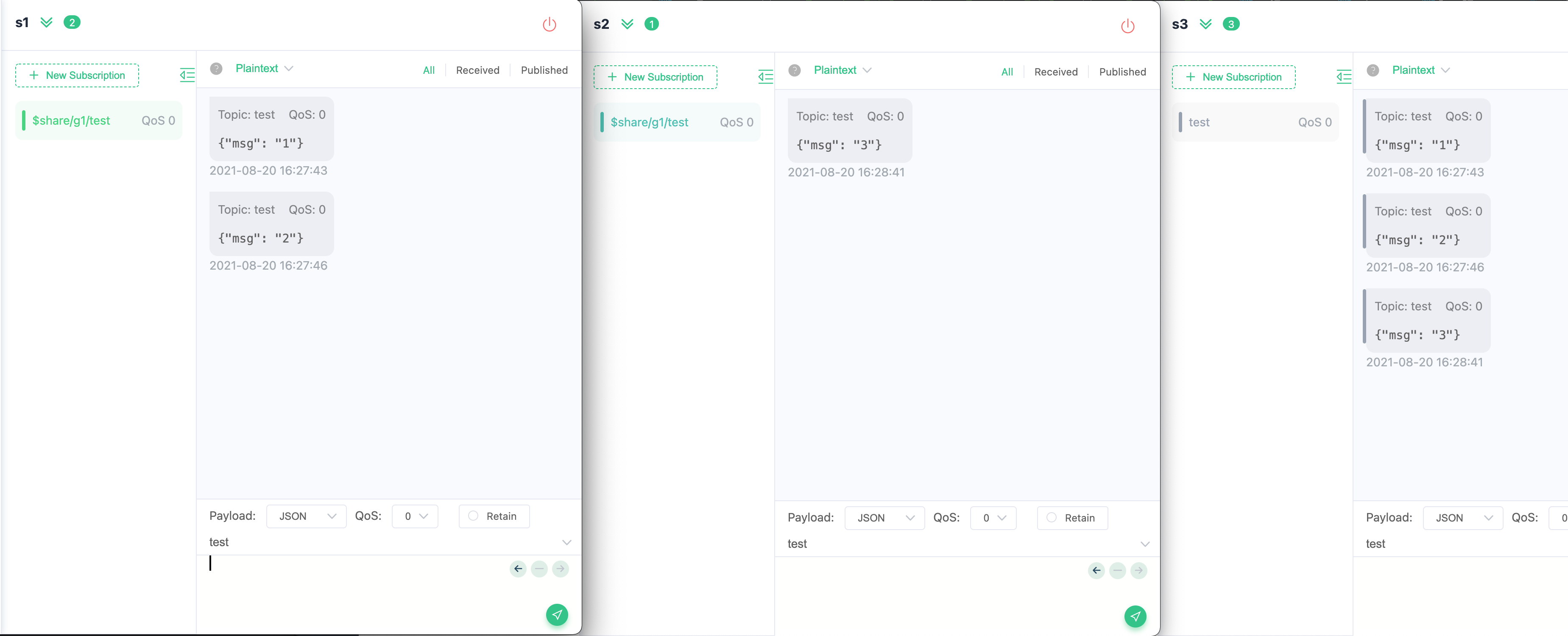Shared Subscription
A shared subscription is a subscription mode to implement load balancing among multiple subscribers. Clients can be divided into multiple subscription groups, and messages are still forwarded to all subscription groups, but only one client within each subscription group receives the message at a time. EMQX Cloud supports shared subscriptions with a group name in the following format: $share/<group-name>/<topic-name>.
Shared subscriptions support several distribution strategies:
| Strategy | Description |
|---|---|
| Random | Selects a session randomly within the group. |
| Round Robin | Distributes messages sequentially across sessions in order. |
| Hash | Assigns messages based on a hash of the topic or the publisher’s client ID. |
| Sticky | Selects a session randomly at first and keeps using it until the subscriber goes offline or reconnects. |
| Local | Prefers sessions on the same node as the publisher; if none exist, selects randomly. |
EMQX Cloud uses the Round Robin strategy by default.
Please note that shared subscription does not dynamically adjust message delivery based on a client's actual load or idleness. If a client has lower processing capability or accumulates too many pending messages, EMQX will continue delivering messages based on the strategy, and messages may be dropped when the queue limit is exceeded.
Therefore, the purpose of shared subscription is to distribute message delivery load more evenly and improve processing controllability, rather than to guarantee that messages will never be lost.
You can use client tools to connect to EMQX Cloud and try this messaging service. This page introduces how shared subscription works and provides a demonstration of how to use the MQTTX Desktop to simulate clients and try the shared subscription feature.
Shared Subscription for Groups
You can enable a shared subscription for groups of subscribers by adding the prefixed $share/<group-name> to the original topic. The group name can be any string. EMQX Cloud forwards messages to different groups at the same time and subscribers belonging to the same group receive messages with load balancing.
For example, if subscribers s1, s2, and s3 are members of group g1, subscribers s4 and s5 are members of group g2, and all subscribers subscribe to the original topic t1. The shared subscription topics must be $share/g1/t1 and $share/g2/t1. When EMQX publishes a message msg1 to the original topic t1:
- EMQX Could sends
msg1to both groupsg1andg2. - Only one of
s1,s2,s3will receivemsg1. - Only one of
s4ands5will receivemsg1.

Shared Subscription and Session
The concept of shared subscription and the use of a persistent session in MQTT clients presents a contradiction, making it impossible to use both features simultaneously. If you are using the shared subscription functionality, it is essential to enable the clean session feature on the client by setting the clean_session parameter to true.
The persistent session (clean_session=false) feature ensures that subscribers can resume data flow immediately after reconnecting without losing any messages. This is vital for maintaining reliable message delivery. By setting the clean_session parameter to false, the session persists even when the client goes offline, allowing the device to continue receiving messages. However, since the device is offline, it may not process the received messages promptly, leading to a potential accumulation of messages within the session over time.
When the shared subscription is enabled and another device within the same group takes over the data flow of the offline device, it won't receive any of the accumulated messages because they are considered part of the session of the original device. Consequently, if the device remains offline for an extended period, the message buffer of the persistent session could overflow, resulting in message loss. This situation can disrupt load balancing and eventually lead to the depletion of memory and storage resources, negatively impacting the system's stability and overall performance.
For more information on the persistent session, see MQTT Persistent Session and Clean Session Explained.
Test Shared Subscription Using MQTTX
Simulate client subscriptions using MQTTX.
- s1, s2 subscribe topic
$share/g1/test - s3 subscribe topic
test

Create client P1 using MQTTX to send 3 messages to the topic test

s1 receive msg1, msg2, s2 receive msg3 and s3 receive all messages
